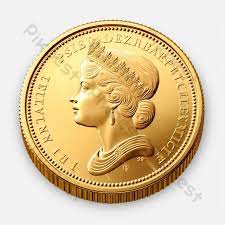Wild Middle Ages and Russian-Dutch ducats
“There are collectors who collect antique coins, but we do not deal with such coins. European – because it is rather difficult for a non-specialist to read the oriental script on coins, and, perhaps, only specialists collect Muslim coins. Such a coin is quite difficult even to attribute according to the catalog,” explains Dmitry Maksimov.
From the European Middle Ages, the most popular are the coins of Germany. This is explained by the fact that in fragmented feudal Germany, each principality minted its own coins, and in addition, there were free cities that also minted coins at their discretion.
Such a number of coins makes it possible to form a collection, collecting, for example, only coins of one principality or, conversely, one coin from each principality.
As a rule, numismatists are interested in large silver coins – thalers. The price for them is very different: the simplest Dutch thalers can be bought for $ 20, but for individual copies the price can reach tens of thousands of dollars.
Naturally, medieval Europe also minted copper coins, but collectors are extremely rarely interested in them, preferring silver.
Numismatists are also interested in gold, but there are few such coins in circulation. Basically, these are trade coins – Dutch ducats, which were minted on the territory of Russia.
At one time, the tsarist government staged a monetary intervention, secretly minting Dutch gold coins at its own mint and using them for international payments. In the end, the state scam was revealed, a loud scandal broke out, and at the end of the forties of the XIX century this process.
which lasted about 50 years, was stopped. The story, of course, turned out to be unsightly, but quite a lot of ducats have been preserved. However, experts find significant differences between real Dutch and fake Russian coins.
In addition to Germany, numismatists are also interested in Scandinavian coins, Swiss, Swedish, Italian, French and English coins. These preferences have their own explanation.
For example, the Swiss cantons have issued a wide variety of their own coins.
Swedish coins are very interesting in themselves, because at that time Swedish coins were perhaps the best in the world. Interest in these coins is high all over the world – a huge collection of Swedish coins of King Gustav was successfully sold at Sotheby’s auction several years ago.
The second time period that interests collectors of foreign coins is the 19th century and half of the 20th. Here, the coins of the German principalities, which united shortly before the First World War, are in the greatest demand. In general, the geographic priorities of collectors are preserved.
In addition, quite a lot of interesting commemorative coins appear during this time period. The Swiss series dedicated to shooting festivals is very popular, excellent in design and of the highest quality.
Among the English coins of this time there are special sets of coins for collectors – the coins are collected by years and stacked in a luxurious red leather box.
Obverse side of the 40 franc coin from the time of Emperor Napoleon I. Features of the national collection
An indicator of the popularity of a foreign coin in Russia is the frequency of finding a coin in Russian treasures. So, for example, people buried thalers in the ground all the time – they seemed to be a reliable currency for the Middle Ages.
Later coins came to Russia thanks to the foreign campaigns of the Russian army and brisk international trade.
During the NEP, a flood of American coins poured into Russia. But today collectors collect them extremely rarely. The coins themselves are extremely uninteresting, the quality of coinage leaves much to be desired. And the Americans at the same time value their coins at crazy money, and depending on the condition and quality, the price for identical coins differs hundreds of times. In fairness, it must be said that the bonists willingly collect American paper money – they are quite beautiful and much more interesting than coins.
Those who collect foreign coins on some narrow topic are not particularly successful in Russia – they have to travel abroad for coins or look for coins in foreign catalogs and auctions and order them. On the other hand, Russian collectors of foreign coins also have their own little domestic joys – if they find any necessary coin here, then it will cost significantly less than in their homeland.
This is one of the reasons why those who simply invest in them collect coins – it is profitable to buy foreign coins in Russia, and they increase in price over the years as significantly as Russian ones. For large investments, it is quite possible to pick up expensive foreign coins. Sometimes it can be quite some kind of national exotic – say, an expensive Hungarian coin, Polish, Czech …





